
- Home
- Artwork and Photography
- Army Artwork
- Galleries by Topic
- War with Spain Artwork
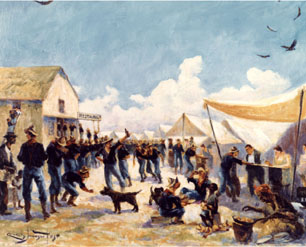
Florida Camp Scene
June 1898
by Charles Johnson Post
This painting depicts Army camp followers providing everything from food and souvenirs, to alcohol, gambling and other activities. Camp followers were always located near large Army camps.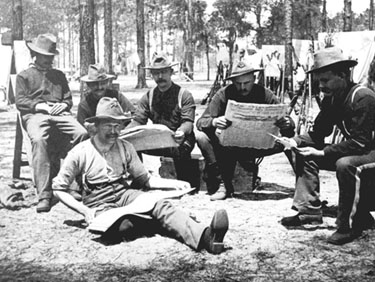
"Keeping Abreast of the Times"
Photo taken by 1LT H.D. Wise
Members of Company E, 9th U.S. Infantry relax and read in Camp Tampa, Florida, June 1898. The newspaper the soldier is reading is the "Watertown Daily Standard".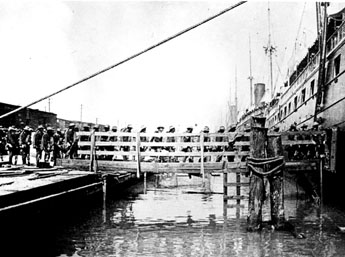
9th U.S. Infantry marching aboard their transport
Photo taken by 1LT H.D. Wise
June 7, 1898, Port Tampa Florida.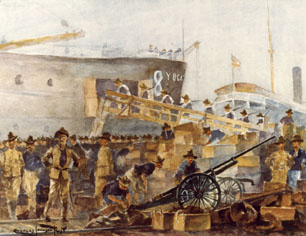
Embarking for Cuba, Port Tampa, Florida, June 1898
by Charles Johnson Post
Lieutenant Colonel Theodore "Teddy" Roosevelt and members of the 1st U.S. Volunteer Cavalry, known as the "Rough Riders," are shown in this painting as they loaded their supplies and equipment aboard the transport "Yucatan." The ship originally was assigned to the 71st New York Infantry, U.S.V.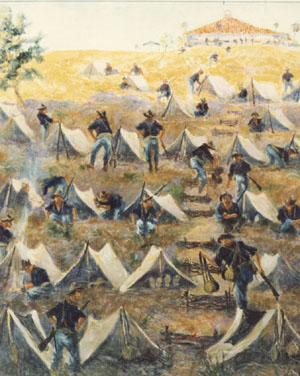
San Juan Hill
by Charles Johnson Post
Members of the 71st New York Infantry, U.S.V, encamped on the San Juan Hill Battlefield, just below the Spanish blockhouse, during the siege of Santiago, Cuba
Members of the 17th U.S. break camp on the morning of June 30, 1898, in preparation for their move on El Caney, Cuba. Rising over the hill in the background is the Signal Corps observation balloon.
Photo taken by 1LT H.D. Wise
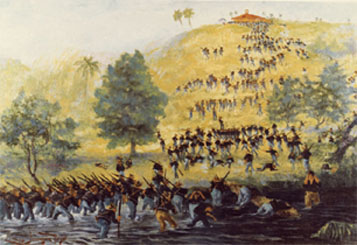
Bloody Ford, July 1, 1898
by Charles Johnson Post
A view of the Battle of San Juan Hill from the bloody ford. The soldiers in the lower half of the painting include the 71st New York Infantry, U.S.V., and the 16th Infantry. The soldiers in the middle and top of the painting were from the 9th, 13th and 24th Infantry.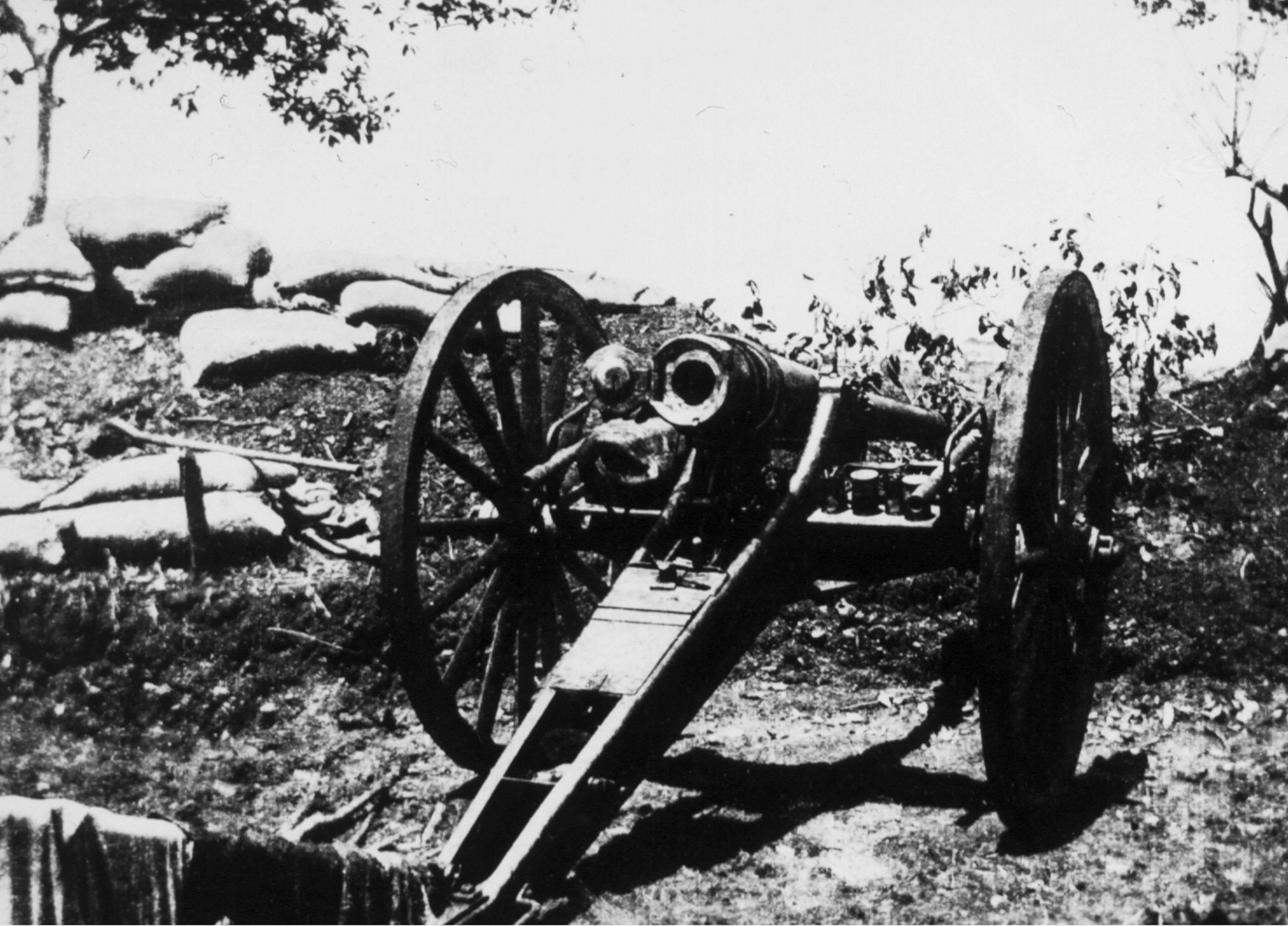
3.2 inch field gun
Photo taken by QMSGT C.E. Ring, 71st NY Inf, U.S.V.
Artillery piece in position on San Juan Ridge overlooking the city of Santiago de Cuba, July 1898. The gun belonged to Capron's Battery.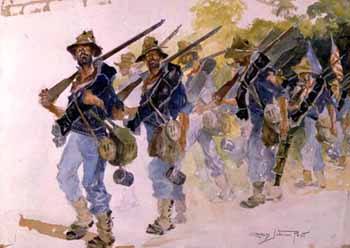
We Leave the Trenches, August 8, 1898
by Charles Johnson Post
Sick from tropical diseases, straggling members of the 71st New York Infantry, U.S. Volunteers march back to Siboney, Cuba prior to embarking for the United States.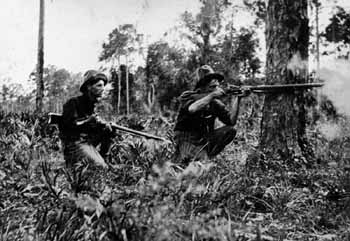
Skirmishers
Members of the 5th Maryland Infantry, U.S. Volunteers, during a field exercise at Tampa, Florida, July 1898. The Soldiers are equipped with the Model 1884 .45 caliber rifle.
The Gatling Guns, July 1 1898
by Charles Johnson Post
2LT John H. Parker's Gatling Gun Detachment crossing the "Bloody Ford" during the Battle of San Juan Hill.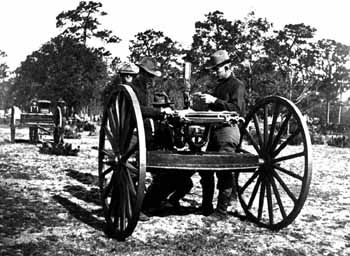
Members of 2LT John H. Parker's (13th U.S. Infantry) Gatling Gun Detachment Training at Tampa, Florida, in June of 1898. The detachment was equipped with four caliber .30 Model 1895 Gatling Guns.
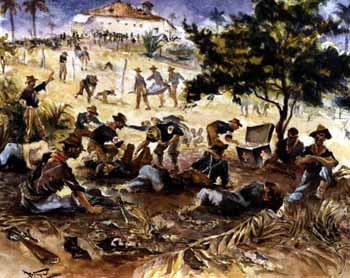
Field Hospital Back of the Lines, July 1, 1898
by Charles Johnson Post
A make-shift First Aid post set up on the slopes of San Juan Hill below the Block House.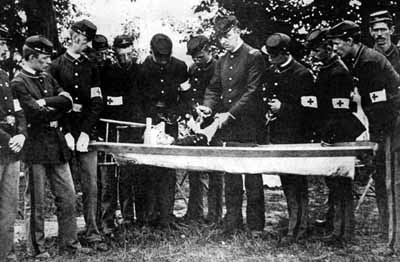
Medical detachment from the New York National Guard conducting field training at Camp Black, Hempstead, Long Island, New York, prior to mustering into Federal service, May 1898.
About the Artist: Charles Johnson Post
Charles Johnson Post was born in 1873 in New York City. He studied at the Art Students League in New York City under John Twachtman, Kenyon Cox, J. Carroll Beckwith, and Harper Pennington. Post enlisted as a private in 1898 with the 71st New York Infantry, U.S.V., which served with a regiment of the Fifth Army Corps. The paintings in this visual exhibit came from sketchbooks Post made during his time in Cuba. Charles Johnson Post died in New York City in 1956.
About the Photographers
Members of the U.S. Army took the photographs used in this exhibit. The original photographs are located in the U.S. Army Center of Military History, Washington, D.C.
